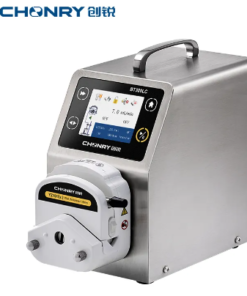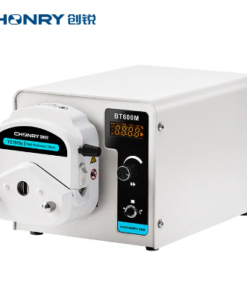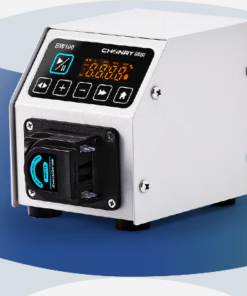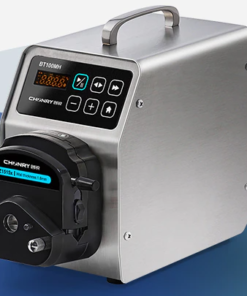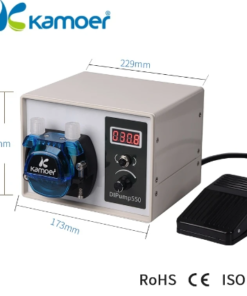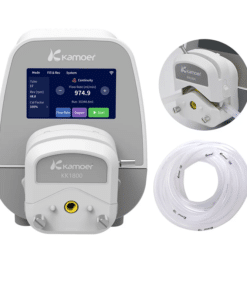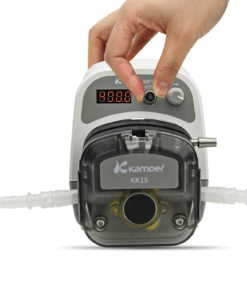Peristaltic Pump
A peristaltic pump is a type of positive displacement pump that uses a flexible tube to pump fluids. It works by compressing the tube, creating a pressure wave that propels the fluid forward.
How it works:
- Tube Compression: A series of rollers or shoes compress the flexible tube.
- Fluid Displacement: As the tube is compressed, the fluid is forced to move forward.
- Tube Relaxation: The tube relaxes, creating a vacuum that draws in more fluid.
Key Advantages:
- Gentle Pumping: The peristaltic action is gentle, making it suitable for delicate fluids.
- No Contamination: The fluid only contacts the inner surface of the tube, minimizing contamination.
- Precise Flow Control: By adjusting the pump’s speed, precise flow rates can be achieved.
- Versatile: Can handle a wide range of fluids, from thin liquids to viscous slurries.
- Self-Priming: Can pump fluids from a reservoir below the pump level.
- Low Maintenance: Simple design with minimal moving parts.
Applications:
- Laboratory Applications: Dispensing precise volumes of liquids, transferring samples, and feeding reagents.
- Pharmaceutical Industry: Transporting sensitive drugs and chemicals.
- Food and Beverage Industry: Pumping food products like sauces, syrups, and dairy products.
- Biotechnology: Transferring cell cultures and other biological materials.
- Chemical Processing: Handling corrosive and hazardous fluids.
- Medical Applications: Infusing fluids and medications.
Types of Peristaltic Pumps:
- Roller Pumps: Use rollers to compress the tube.
- Shoe Pumps: Use shoes to compress the tube.
- Linear Peristaltic Pumps: Use a linear motion to compress the tube.
By understanding the principles of peristaltic pumps, you can select the right pump for your specific application and ensure efficient and reliable fluid transfer.
Peristaltic Pump
Peristaltic Pump
BT600M Peristaltic Pump Precision Dosing Max Flow Rate 2280ml/min
Peristaltic Pump
BW100 High Precision Micro Flow Rate Transfer Peristaltic Pump
Peristaltic Pump
Peristaltic Pump
Peristaltic Pump
Peristaltic Pump
GROTHEN G1016-1 Peristaltic pump dosing pump gear motor 12V 24V
Peristaltic Pump
GROTHEN G728-2 Peristaltic Pump Dosing Pump Peristaltic Liquid Pump
Peristaltic Pump
GROTHEN G928S Large Flow Stepper Motor Pump 6-30V Peristaltic Pump
Peristaltic Pump
Peristaltic Pump
Kamoer 0.03-1500ml/min UIP WIFI-E High Flow Peristaltic Pump
Peristaltic Pump

